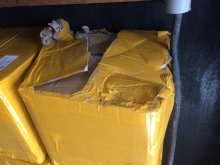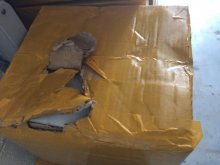That's what I suspected. You could start even lower than 3.4v/cell to avoid any HV disconnects. Say 3.375v/cell. Just make sure that balancing kicks in around whatever cell voltage you pick. I assume you'd like to get them up to capacity before the "season" starts, but you've got months to creep up to that.
While you are in this process, you might want to set the "absorb" time longer than normal for LFP ( often very short). That will hold the pack at the higher voltage for a bit longer, letting the balance circuits do their work.





